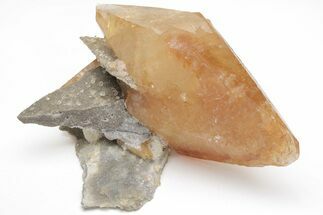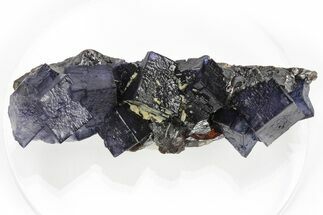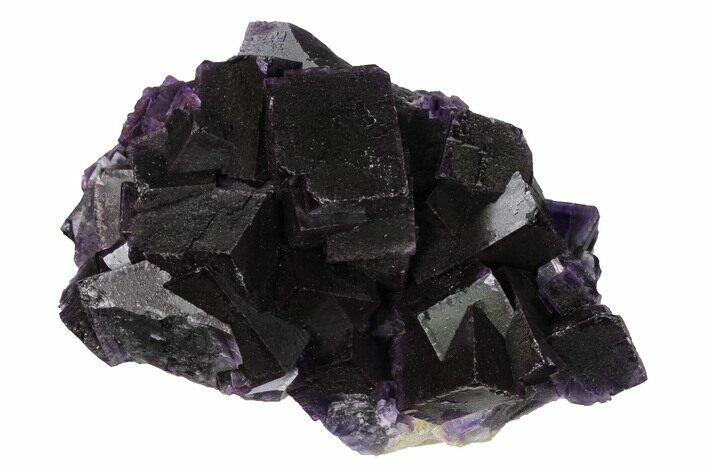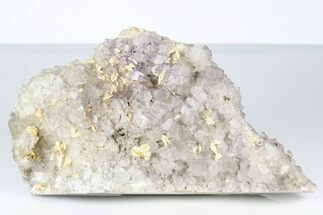This Specimen has been sold.
3.8" Deep Purple Fluorite on Druzy Quartz - Elmwood Mine
This is a 3.8" wide specimen of beautiful deep purple cubic fluorite crystals on a sparkling druzy quartz encrusted matrix from the famous Elmwood mine in Tennessee. The largest cube is .85" wide. It comes with an acrylic display stand.
The Elmwood Mine is a zinc mine in Carthage, Tennessee that opened in 1969. It then closed for many years, only to be reopened in 2010. It has produced many world class specimens of fluorite, calcite, barite, and galena over the years. Specimens used to be plentiful as miners were allowed to recover specimens, but collecting is strictly prohibited by the new mine owners. They've gone to great lengths to prevent the mining of specimens, including blasting crystal pockets or filling them with slurry.
About Fluorite
Fluorite is a halide mineral comprised of calcium and fluorine, CaF2. The word fluorite is from the Latin fluo-, which means "to flow". In 1852 fluorite gave its name to the phenomenon known as fluorescence, or the property of fluorite to glow a different color depending upon the bandwidth of the ultraviolet light it is exposed to. Fluorite occurs commonly in cubic, octahedral, and dodecahedral crystals in many different colors. These colors range from colorless and completely transparent to yellow, green, blue, purple, pink, or black. Purples and greens tend to be the most common colors seen, and colorless, pink, and black are the rarest.
Fluorite is a halide mineral comprised of calcium and fluorine, CaF2. The word fluorite is from the Latin fluo-, which means "to flow". In 1852 fluorite gave its name to the phenomenon known as fluorescence, or the property of fluorite to glow a different color depending upon the bandwidth of the ultraviolet light it is exposed to. Fluorite occurs commonly in cubic, octahedral, and dodecahedral crystals in many different colors. These colors range from colorless and completely transparent to yellow, green, blue, purple, pink, or black. Purples and greens tend to be the most common colors seen, and colorless, pink, and black are the rarest.
About Quartz
Quartz is the name given to silicon dioxide (SiO2) and is the second most abundant mineral in the Earth's crust. Quartz crystals generally grow in silica-rich environments--usually igneous rocks or hydrothermal environments like geothermal waters--at temperatures between 100°C and 450°C, and usually under very high pressure. In either case, crystals will precipitate as temperatures cool, just as ice gradually forms when water freezes. Quartz veins are formed when open fissures are filled with hot water during the closing stages of mountain formation: these veins can be hundreds of millions of years old.
Quartz is the name given to silicon dioxide (SiO2) and is the second most abundant mineral in the Earth's crust. Quartz crystals generally grow in silica-rich environments--usually igneous rocks or hydrothermal environments like geothermal waters--at temperatures between 100°C and 450°C, and usually under very high pressure. In either case, crystals will precipitate as temperatures cool, just as ice gradually forms when water freezes. Quartz veins are formed when open fissures are filled with hot water during the closing stages of mountain formation: these veins can be hundreds of millions of years old.
SPECIES
Fluorite & Quartz
LOCATION
Elmwood Mine, Carthage, Tennessee
SIZE
3.8 x 2.2"
CATEGORY
SUB CATEGORY
ITEM
#153328
 Reviews
Reviews














